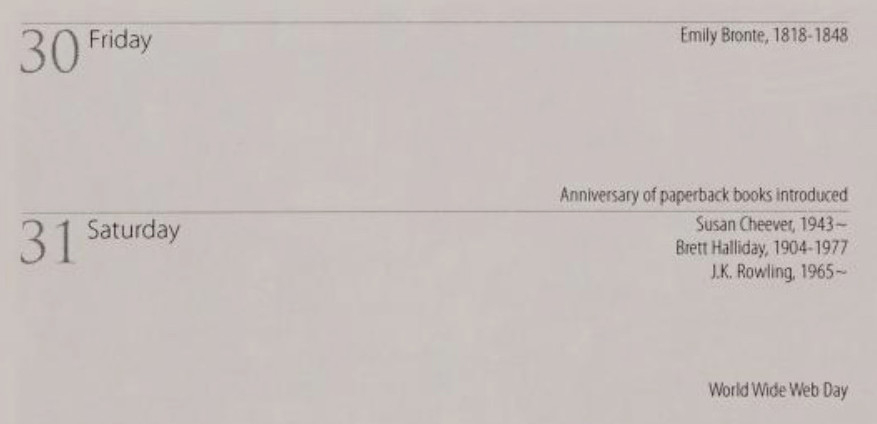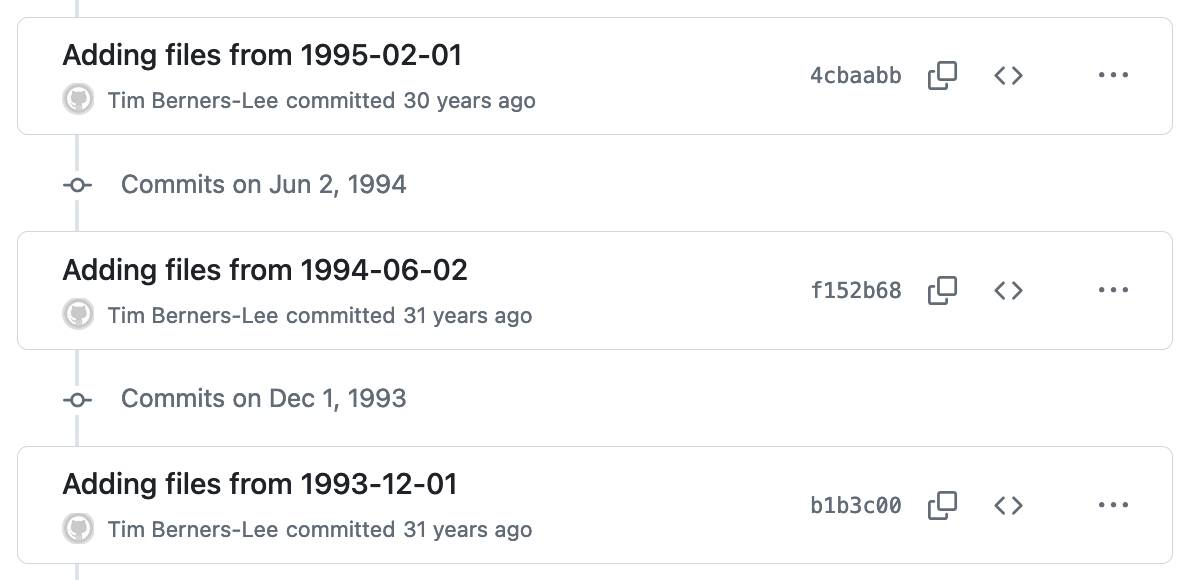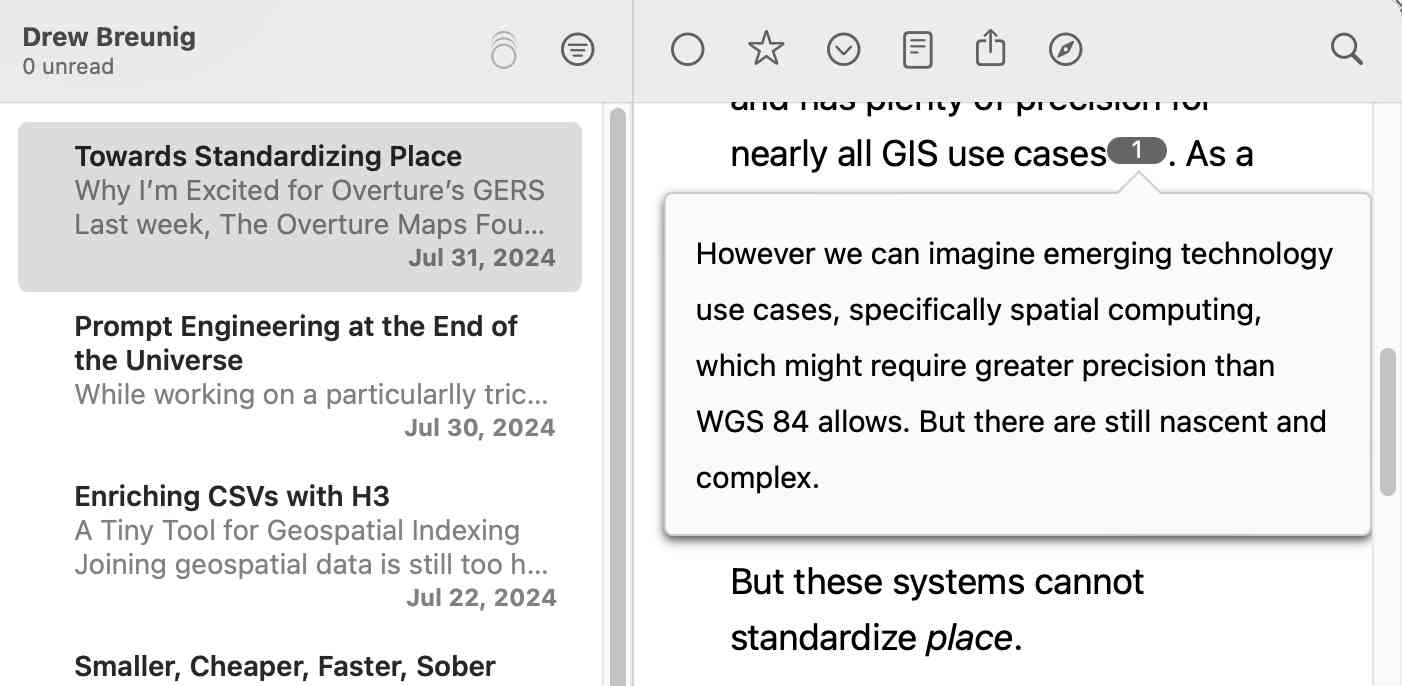Thursday, 1st August 2024
Today’s research challenge: why is August 1st “World Wide Web Day”? Here's a fun mystery. A bunch of publications will tell you that today, August 1st, is "World Wide Web Day"... but where did that idea come from?
It's not an official day marked by any national or international organization. It's not celebrated by CERN or the W3C.
The date August 1st doesn't appear to hold any specific significance in the history of the web. The first website was launched on August 6th 1991.
I posed the following three questions this morning on Mastodon:
- Who first decided that August 1st should be "World Wide Web Day"?
- Why did they pick that date?
- When was the first World Wide Web Day celebrated?
Finding answers to these questions has proven stubbornly difficult. Searches on Google have proven futile, and illustrate the growing impact of LLM-generated slop on the web: they turn up dozens of articles celebrating the day, many from news publications playing the "write about what people might search for" game and many others that have distinctive ChatGPT vibes to them.
One early hint we've found is in the "Bylines 2010 Writer's Desk Calendar" by Snowflake Press, published in January 2009. Jessamyn West spotted that on the book's page in the Internet Archive, but it merely lists "World Wide Web Day" at the bottom of the July calendar page (clearly a printing mistake, the heading is meant to align with August 1st on the next page) without any hint as to the origin:

I found two earlier mentions from August 1st 2008 on Twitter, from @GabeMcCauley and from @iJess.
Our earliest news media reference, spotted by Hugo van Kemenade, is also from August 1st 2008: this opinion piece in the Attleboro Massachusetts Sun Chronicle, which has no byline so presumably was written by the paper's editorial board:
Today is World Wide Web Day, but who cares? We'd rather nap than surf. How about you? Better relax while you can: August presages the start of school, a new season of public meetings, worries about fuel costs, the rundown to the presidential election and local races.
So the mystery remains! Who decided that August 1st should be "World Wide Web Day", why that date and how did it spread so widely without leaving a clear origin story?
If your research skills are up to the challenge, join the challenge!
1991-WWW-NeXT-Implementation on GitHub. I fell down a bit of a rabbit hole today trying to answer that question about when World Wide Web Day was first celebrated. I found my way to www.w3.org/History/1991-WWW-NeXT/Implementation/ - an Apache directory listing of the source code for Tim Berners-Lee's original WorldWideWeb application for NeXT!
The code wasn't particularly easy to browse: clicking a .m file would trigger a download rather than showing the code in the browser, and there were no niceties like syntax highlighting.
So I decided to mirror that code to a new repository on GitHub. I grabbed the code using wget -r and was delighted to find that the last modified dates (from the early 1990s) were preserved ... which made me want to preserve them in the GitHub repo too.
I used Claude to write a Python script to back-date those commits, and wrote up what I learned in this new TIL: Back-dating Git commits based on file modification dates.
End result: I now have a repo with Tim's original code, plus commit dates that reflect when that code was last modified.

Footnotes that work in RSS readers. Chris Coyier explained the mechanism used by Feedbin to render custom footnotes back in 2019.
I stumbled upon this after I spotted an inline footnote rendered in NetNewsWire the other day (from this post by Drew Breunig):

Since feed readers generally strip JavaScript and CSS and only allow a subset of HTML tags I was intrigued to figure out how that worked.
I found this code in the NetNewsWire source (it's MIT licensed) which runs against elements matching this CSS selector:
sup > a[href*='#fn'], sup > div > a[href*='#fn']
So any link with an href attribute containing #fn that is a child of a <sup> (superscript) element.
In Drew's post the HTML looks like this:
<!-- Footnote link: -->
<sup id="fnref:precision" role="doc-noteref">
<a href="#fn:precision" class="footnote" rel="footnote">1</a>
</sup>
<!-- Then at the bottom: -->
<div class="footnotes" role="doc-endnotes">
<ol>
<li id="fn:precision" role="doc-endnote">
<p>This is the footnote.
<a href="#fnref:precision" class="reversefootnote" role="doc-backlink">↩</a>
</p>
</li>
</ol>
</div>
Where did this convention come from? It doesn't seem to be part of any specific standard. Chris linked to www.bigfootjs.com (no longer resolving) which was the site for the bigfoot.js jQuery plugin, so my best guess is the convention came from that.
Towards Standardizing Place. Overture Maps announced General Availability of its global maps datasets last week, covering places, buildings, divisions, and base layers.
Drew Breunig demonstrates how this can be accessed using both the Overture Explorer tool and DuckDB, and talks about Overture's GERS IDs - reminiscent of Who's On First IDs - which provide stable IDs for all kinds of geographic places.